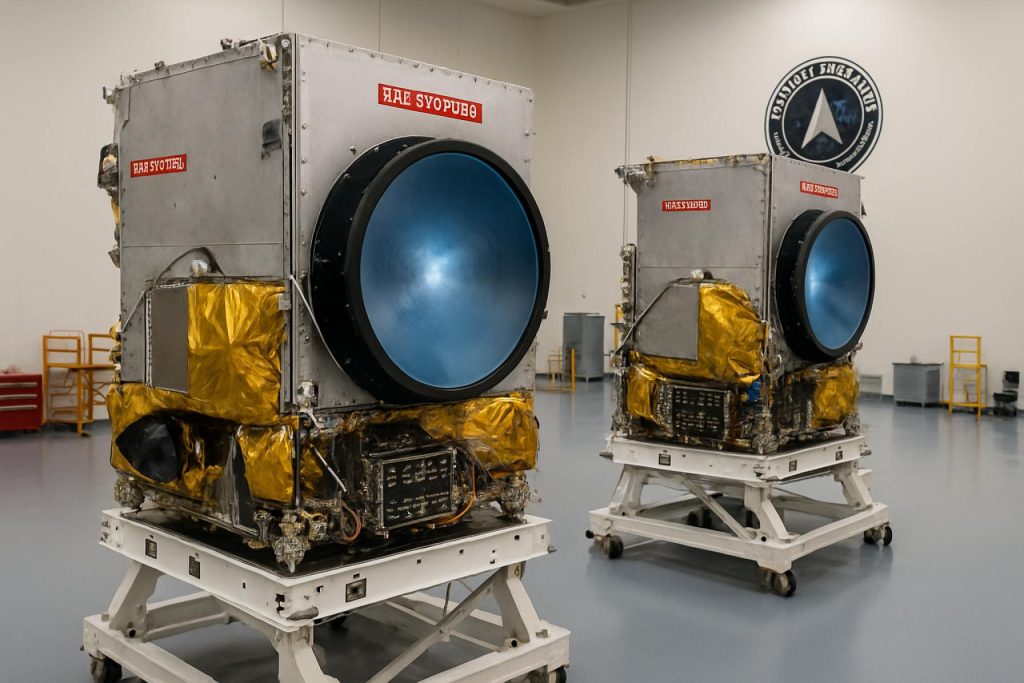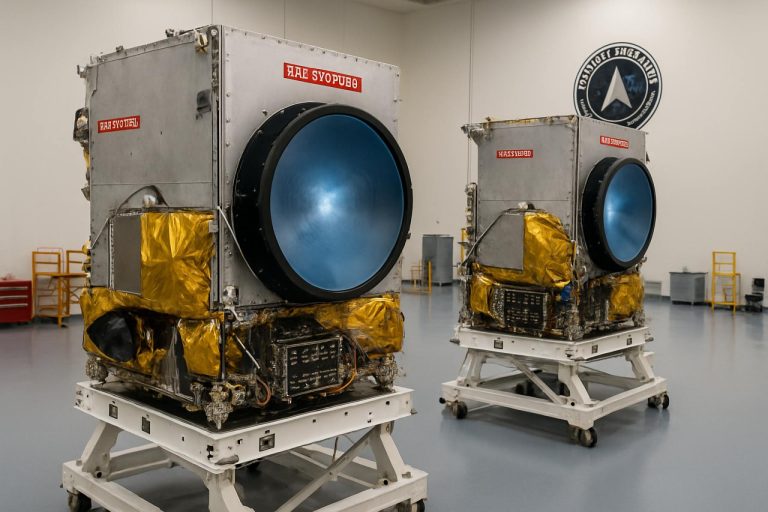
U.S. Space Force Taps BAE Systems for Next-Gen Missile Tracking Satellites in $1.2B Space Race
BAE Systems scores a $1.2 billion contract for missile tracking satellites, boosting U.S. national security and space surveillance in 2025.
- Contract Value: $1.2 billion
- Number of Satellites: 10
- Delivery Timeline: 4 years
- Tech Focus: Missile & Hypersonic Threat Tracking
BAE Systems is gearing up to revolutionize American space defense, securing a staggering $1.2 billion contract to develop missile warning and tracking satellites for the U.S. Space Force. This contract places BAE at the forefront of global defense as the military ramps up efforts to counter increasingly sophisticated ballistic and hypersonic missile threats.
The contract, awarded by U.S. Space Systems Command, positions BAE Systems as the prime force behind the Resilient Missile Warning & Tracking (RMWT) Epoch 2 program, delivering urgent capabilities as geopolitical tensions continue to escalate.
What Makes These Satellites Different?
Unlike traditional satellites, BAE’s new fleet will orbit in Medium Earth Orbit (MEO), giving them a unique vantage point to track high-speed threats. The ten satellites will be equipped with advanced electro-optical/infrared sensors and high-bandwidth communication payloads, all managed by the latest onboard AI-powered data processing.
BAE’s Elevation Trek bus will serve as the backbone of these satellites, offering greater payload flexibility, superior control systems, and robust cybersecurity. The Trek platform ensures seamless data flow directly into U.S. operational missile defense networks.
How Will This Strengthen U.S. Security?
This satellite constellation isn’t just a tech showcase—it forms a critical detection layer against emerging hypersonic weapons, a growing concern for defense strategists worldwide. With real-time tracking and smarter command-and-control enabled by BAE’s new ground systems, the U.S. Space Force will dramatically increase its warning times and interception precision.
As global threats diversify, synergized space and ground operations become vital. BAE will provide five years of ongoing satellite operations and support, ensuring the network remains state-of-the-art and highly resilient.
Q&A: Everything You Need to Know
Q: Why is missile tracking from space so crucial in 2025?
A: New hypersonic missiles and stealthy ballistic threats can evade older tracking networks. Accurate space-based surveillance provides vital early-warning, intercept, and defense capabilities crucial for national security.
Q: What sets BAE Systems’ solution apart from previous satellites?
A: Integrated AI data processing, faster crosslinks, enhanced sensors, and secure Trek bus technology put BAE’s design at the cutting edge of satellite defense in 2025 and beyond.
Q: When will the new satellites be operational?
A: Initial delivery is promised within four years, with support extending at least five years post-launch.
How Does This Fit into the U.S. Military’s Broader Space Strategy?
This contract comes on the heels of BAE’s selection for the Space Force’s FORGE program, further embedding the company within the heart of American space defense. These projects, paired with advances by space leaders like NASA, SpaceX, and defense agencies like U.S. Department of Defense, solidify the U.S. as a key player in the rapidly evolving space race.
How Can Satellite Teams Ensure Project Success?
– Prioritize flexible, modular designs like the Trek bus for rapid payload integration.
– Invest in robust cybersecurity for all space assets.
– Lean into AI-driven data analytics to reduce latency between threat detection and action.
– Foster strong “one-team” collaboration across commercial and government partners.
Stay tuned as BAE Systems redefines the future of space security—your safety could depend on it.
- Watch for upcoming Space Force satellite launches in 2025
- Follow the latest breakthroughs from BAE Systems and U.S. Space Force
- Track advancements in hypersonic missile defense technology
- Stay updated on collaborative efforts in the new space race
https://youtube.com/watch?v=eg1tlFbF99c



